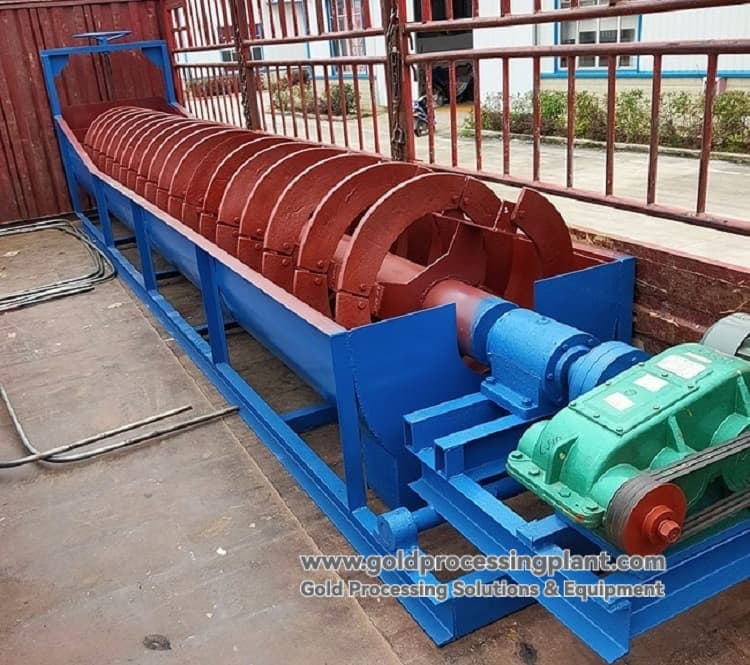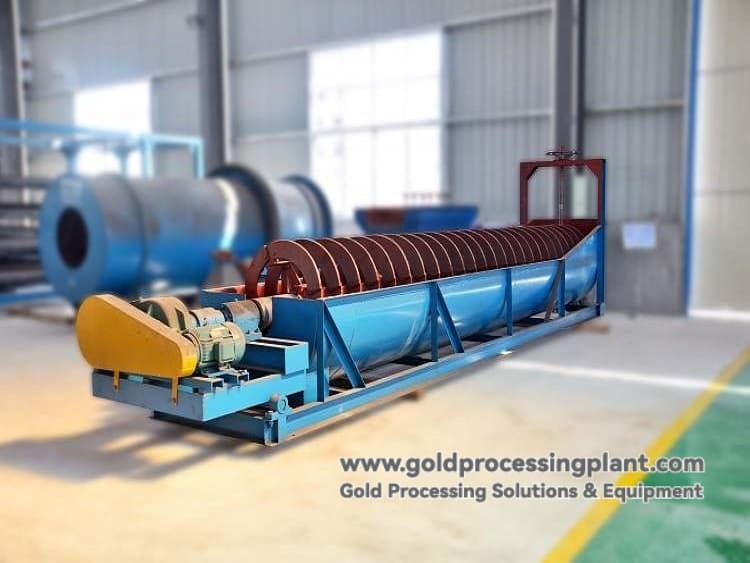Spiral Classifier Overview
Spiral classifier is a traditional mechanical classification equipment, widely used in mineral processing plant and the mill to form a closed-circuit grinding system, the main role is based on the difference in the settling speed of mineral particles in the liquid, the separation of the grinding products into overflow (fine qualified products) and return sand (coarse unqualified products).
Its core function is to mechanically elevate the coarse sand using spiral blades and return it to the mill for regrinding, while allowing the fine grade to be discharged as overflow into the subsequent sorting operation. In addition to being mainly used as pre-grading and check grading, it can also be used for washing, desliming and dewatering of clay-containing ores.
Because of its simple structure, convenient operation, reliable work, and the classification tank has a large inclination angle to facilitate the connection with the mill self-flow, making it the most commonly used type of mechanical classifier.
Spiral classifier structure and working principle
1. Structure composition:
-
Rectangular inclined chute: the inclination angle of the bottom of the chute is generally 12°~18.5°, and the bottom is semi-circular.
-
Spiral shaft: 1 or 2 longitudinal shafts are installed in the trough, and the shafts are continuously equipped with spiral blades. The blades of double spiral are designed to rotate outward.
-
Transmission mechanism: Located at the upper end of the equipment, it drives the spiral shaft to rotate.
-
Lifting device: located on the frame at the lower end of the trough, it can lift the spiral shaft when stopping to prevent the ore from burying the spiral blades, and it can also adjust the gap between the blades and the bottom of the trough.
2. working principle:
The slurry is fed from the side of the trough body. In the lower part of the trough, a settling and grading area is formed:
-
Coarse particles: fast settling speed, sink to the bottom of the trough, pushed to the top of the inclined chute by the rotating spiral blade, and then discharged after dewatering during transportation, and returned to the mill as regrinding sand for regrinding.
-
Fine particles: slow settling speed, too late to settle, carried by the surface flow of the slurry flow, discharged through the overflow weir at the end of the trough, become overflow products, sent to the next beneficiation process.
Main classification and characteristics of spiral classifier
According to the height of the overflow weir (i.e. the height of the grading liquid level), the spiral classifier can be divided into three types:
| Type |
Characteristics |
Applicable Scene |
Classification size |
| High weir spiral classifier |
The overflow weir is higher than the center of the spiral shaft at the lower end, but lower than the upper edge of the spiral blade. The length of grading liquid surface is not big, and the liquid surface is slightly stirred by the spiral blade. |
Suitable for coarse grains classification, is the most commonly used type. |
Above 0.15mm |
| Immersion type (submerged) spiral classifier |
The lower spiral blade is completely submerged below the liquid surface. The grading area is large and smooth, and the stirring is small. |
Suitable for fine grain classification, high overflow productivity. |
Below 0.15mm |
| Low weir type spiral classifier |
The liquid surface of grading is lower than the lower spiral bearing. Liquid surface is very small, strong stirring effect. |
Not used for grading, mainly used for washing of mud-containing sand and gravel. |
-Spiral Classifier |
Summary and Application
The spiral classifier is a classic and reliable classifying equipment, whose core advantage lies in its ability to mechanically transport and return coarse-grained sedimentary sand, and to form an efficient closed-circuit cycle with the grinding machine. Although it has a tendency to be replaced by hydrocyclone in some application areas in recent years, its stable operation, simple operation and no extra pressure required make it still play an irreplaceable role in many mineral processing plants, especially in the treatment of coarser materials or the need to do desliming and dewatering at the same time.


